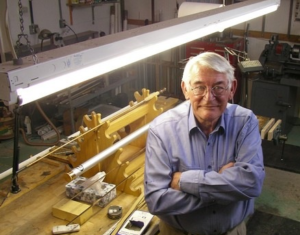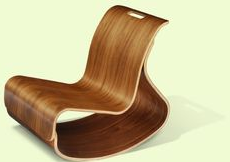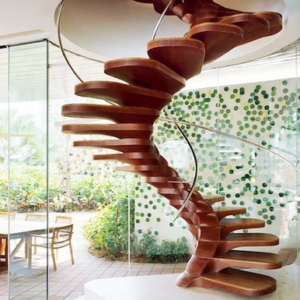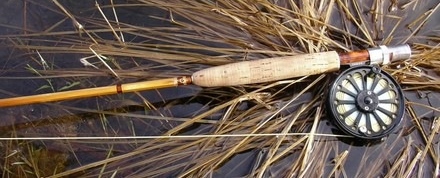My aesthetic goal remains steadfast: to embody the “naturalist aesthetic” in the process of fabricating my bamboo fly rod designs. In a nutshell, I would love to be able to design a rod that that embraces the same aesthetics as the natural world that it intended to be used in. Several examples I have speculated on are: organic materials (bamboo, cork, wood, silk thread) natural colors (browns, tans, flat/shine-free colors) and disguising machined or synthetic components where I cannot replace them.
Arts and Crafts Movement
In many ways I would like the design to pay tribute to the early, fly rod craftsmen whom fabricated bamboo rods out of necessity or passion for the sport when no better alternative existed. These craftsmen were the early entrepreneurs of a culture that has grown into the current identity for many enthusiasts. Thus the primary aesthetic I relate my current design to is the Arts and Crafts movement. The majority of bamboo fly rod producers today still make them by hand, even though they utilize some modern technique and materials to increase the quality and performance. Making something by hand and making it very high quality through patience and experience is the design goal I would like to emulate.
Shown below: Bamboo fly rod builder James Beasley in his Crossville, TN workshop. The article on his work states that even after 43 years of experience each rod still takes James 40-50 hours to make to achieve the quality standards.

Organic Design Movement
The second design movement I identify my “naturalist aesthetic” with is the organic design movement. This is not so much in relation to the modern examples of organic design (smooth architecture, holistic messages and delicacy of design) but rather the inspiration for the movement. The organic design movement was spurred by the desire to draw inspiration from the natural environment, especially the environment surrounding the design such that it “fit in” to the local scenery. Several examples of organic design are shown below and once can see how the natural elements (physical shapes and materials) of the designs shine through in a very aesthetically appealing manner.


Sources:
-http://yobiadventures.com/The-Southeastern-Perfectionist-Part-I-Bamboo-Fly-Rod-Builder-James-Beasley
-https://www.slideshare.net/markrotondella/key-movements-in-design
-https://s3-production.bobvila.com/slides/7922/original/de283a7baaed3354ec8b97d0e4c889bf.jpg?1475711860
-https://www.google.com/search?q=organic+design+movement&source=lnms&tbm=isch&sa=X&ved=0ahUKEwi5zY62k_zSAhVV92MKHa1cDd0Q_AUICCgB&biw=1440&bih=693#imgrc=1EKTD8LofJb4MM:


4 Comments. Leave new
Fly rods are beautiful. I like your exploration and comparison. Who knows this could lead you into the industry and you could be the next Scott rod manufacturer!
I really like the organic design movement. I think it could fit really well with your project as you wanted to keep a natural feel to the rod. I hope your fishing rod turns out well and can’t wait to see the outcome.
I think that you already have a good foundation for the organic design movement since your fly rod is bamboo. I think this sounds like an awesome project and it looks like you have really thought through this. I am excited to see how you can get the stability along with the aesthetic!
I really like your project idea, Jeremy, as well as your thoughtful explanation of where you drew inspiration, and your chosen aesthetic. I am excited to see what you learn in order to create the organic, and how the final presentation looks. I assume that you plan to use the rod after you finish it? Great job!